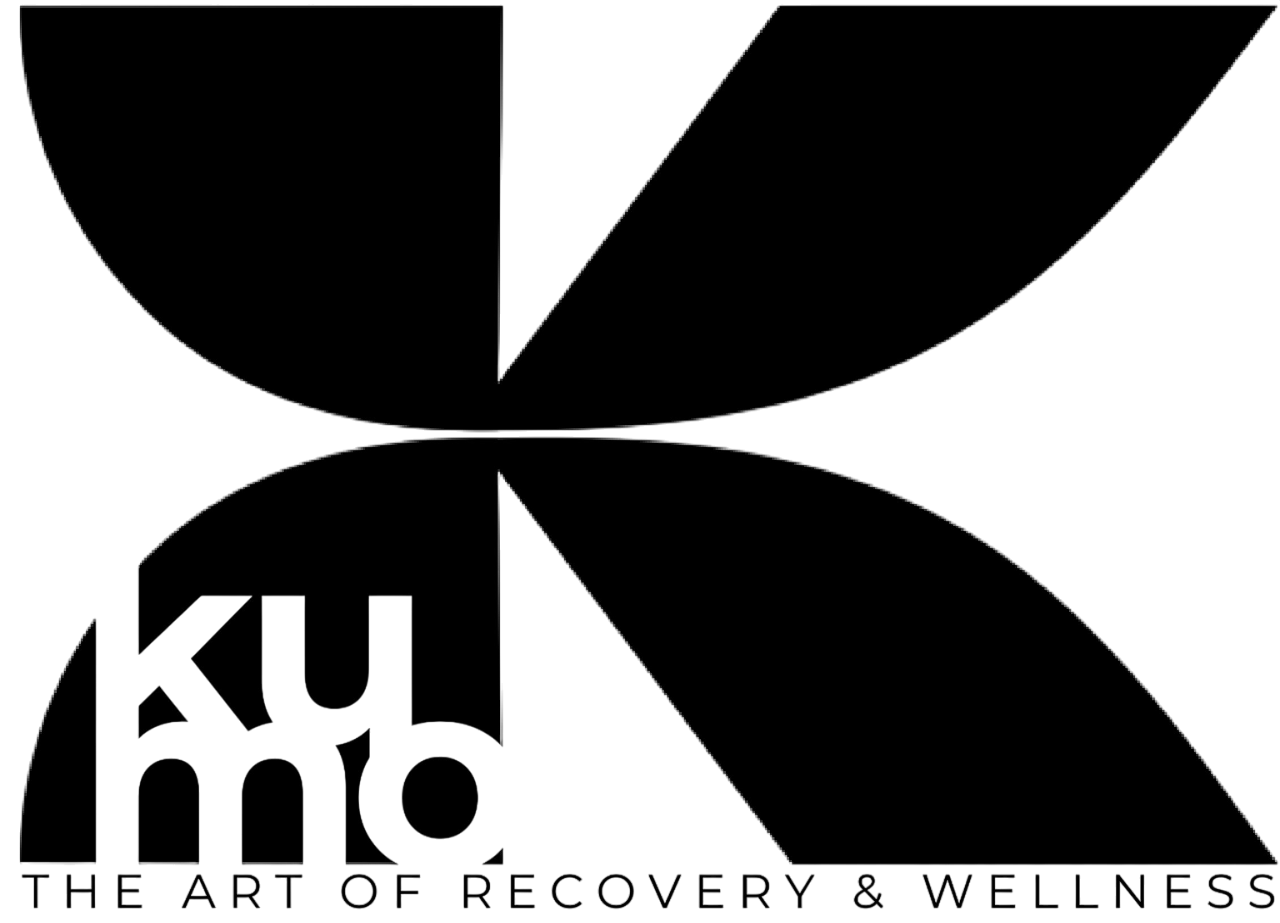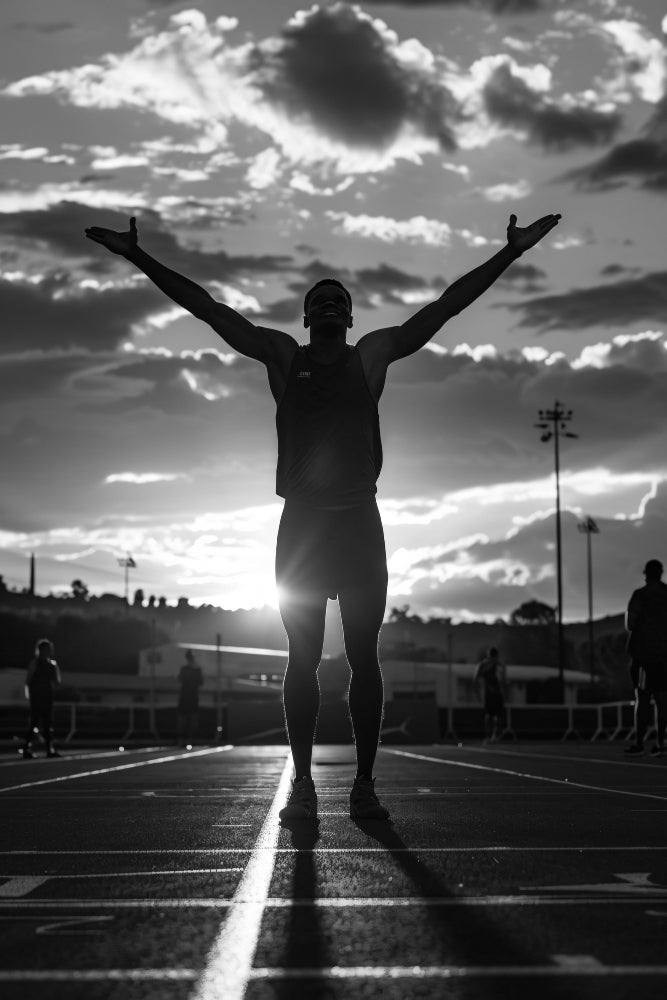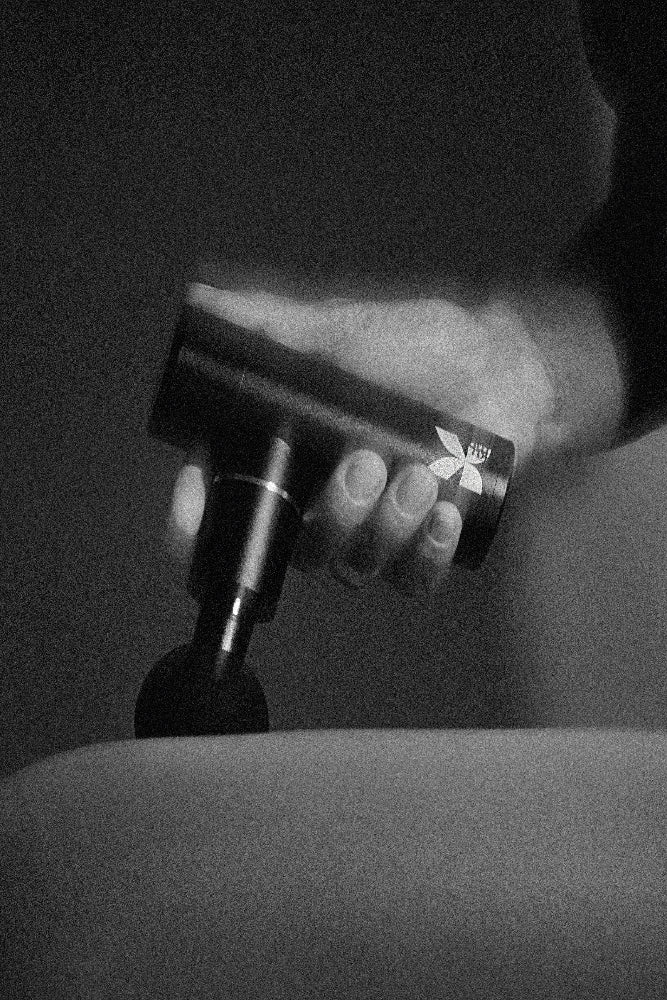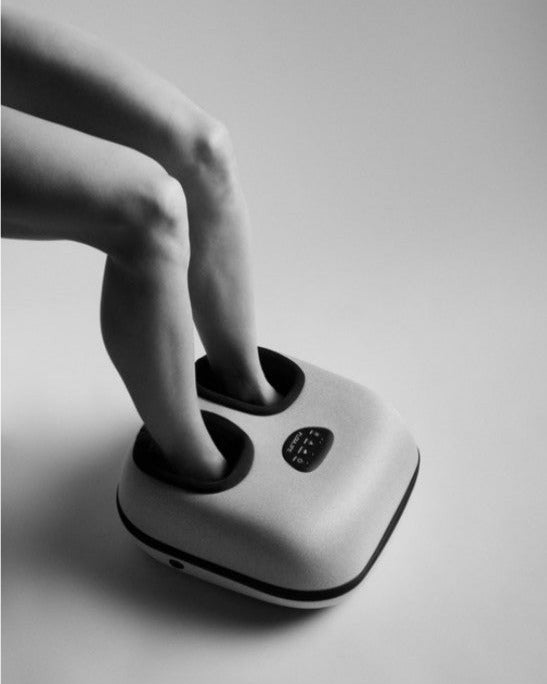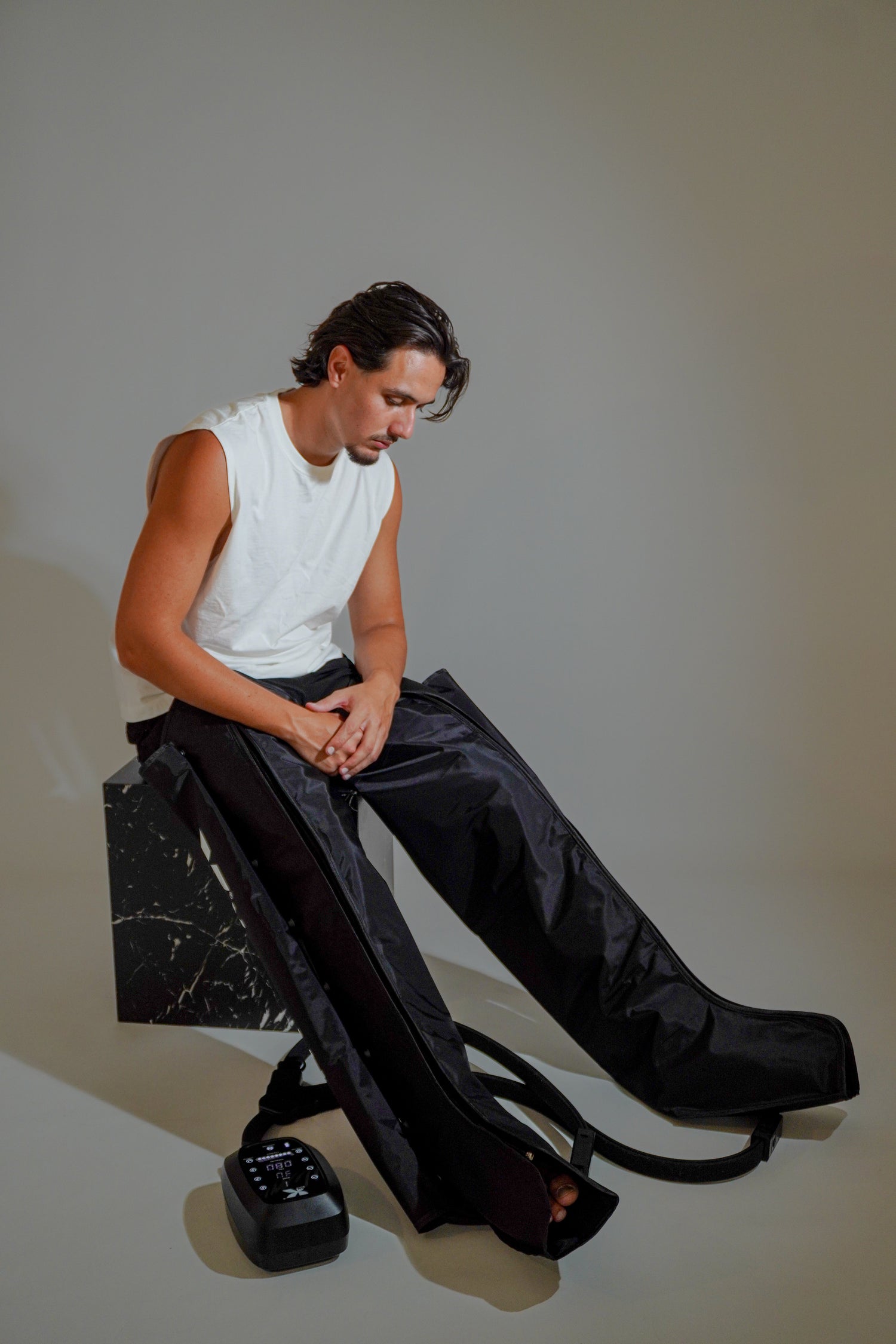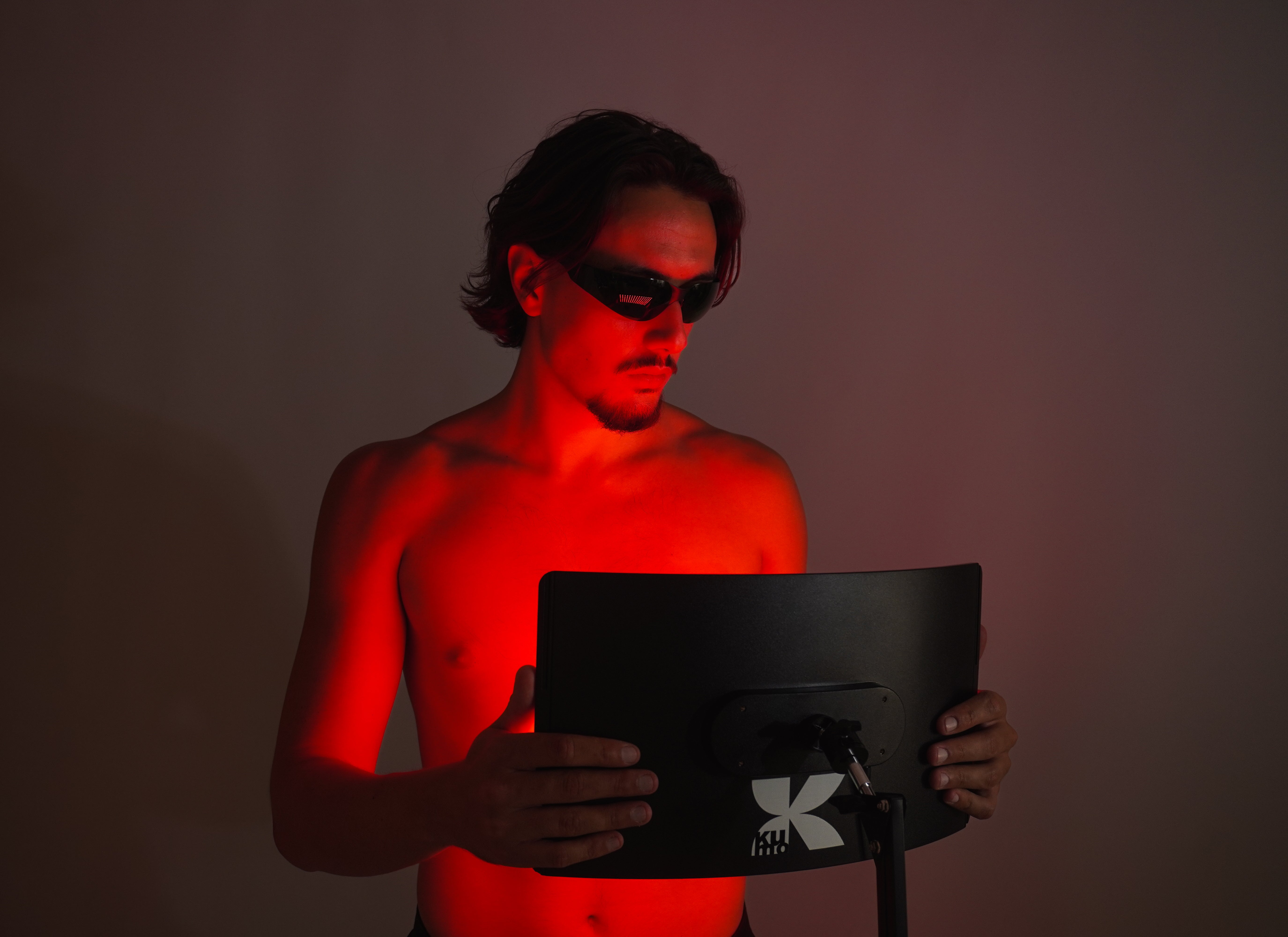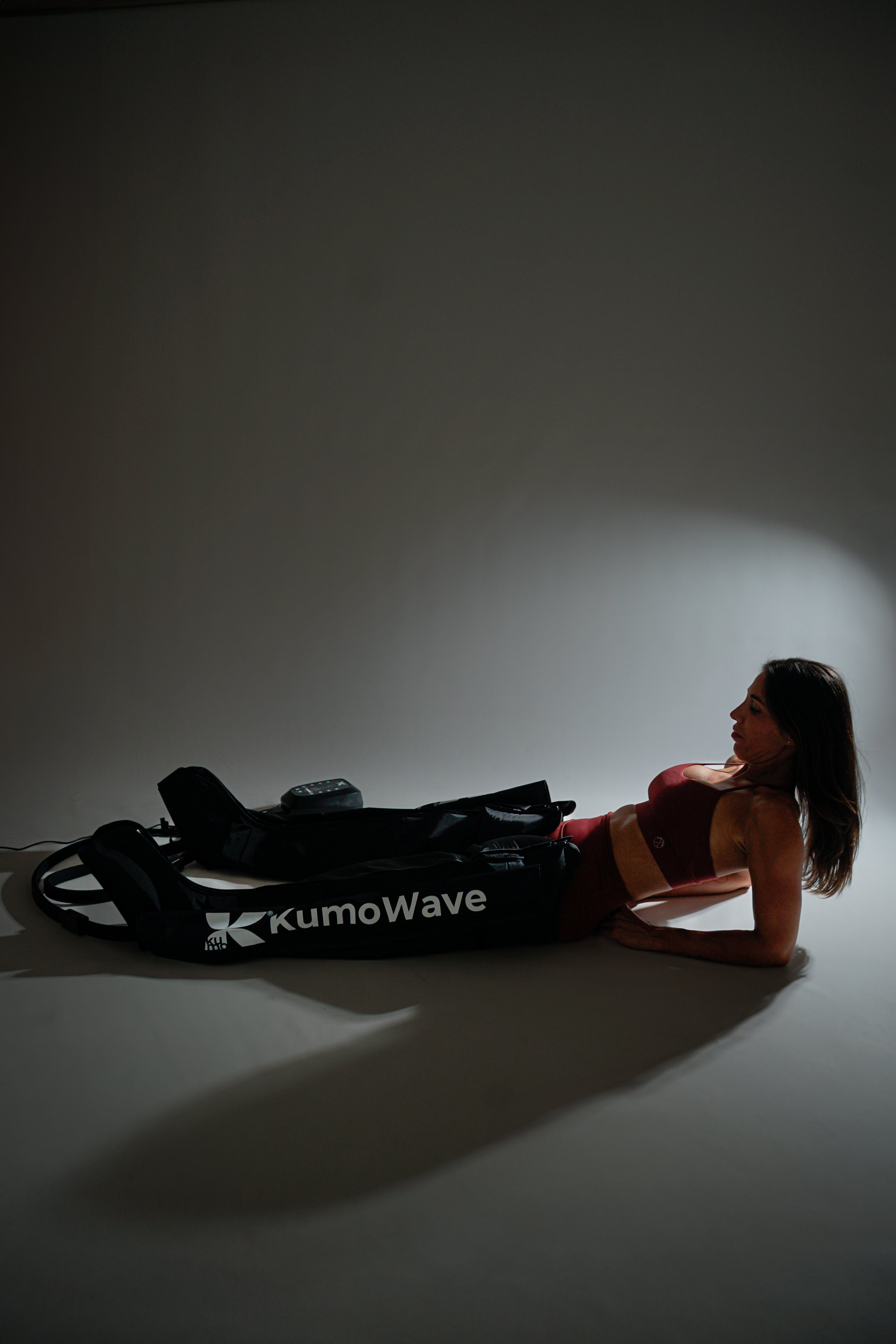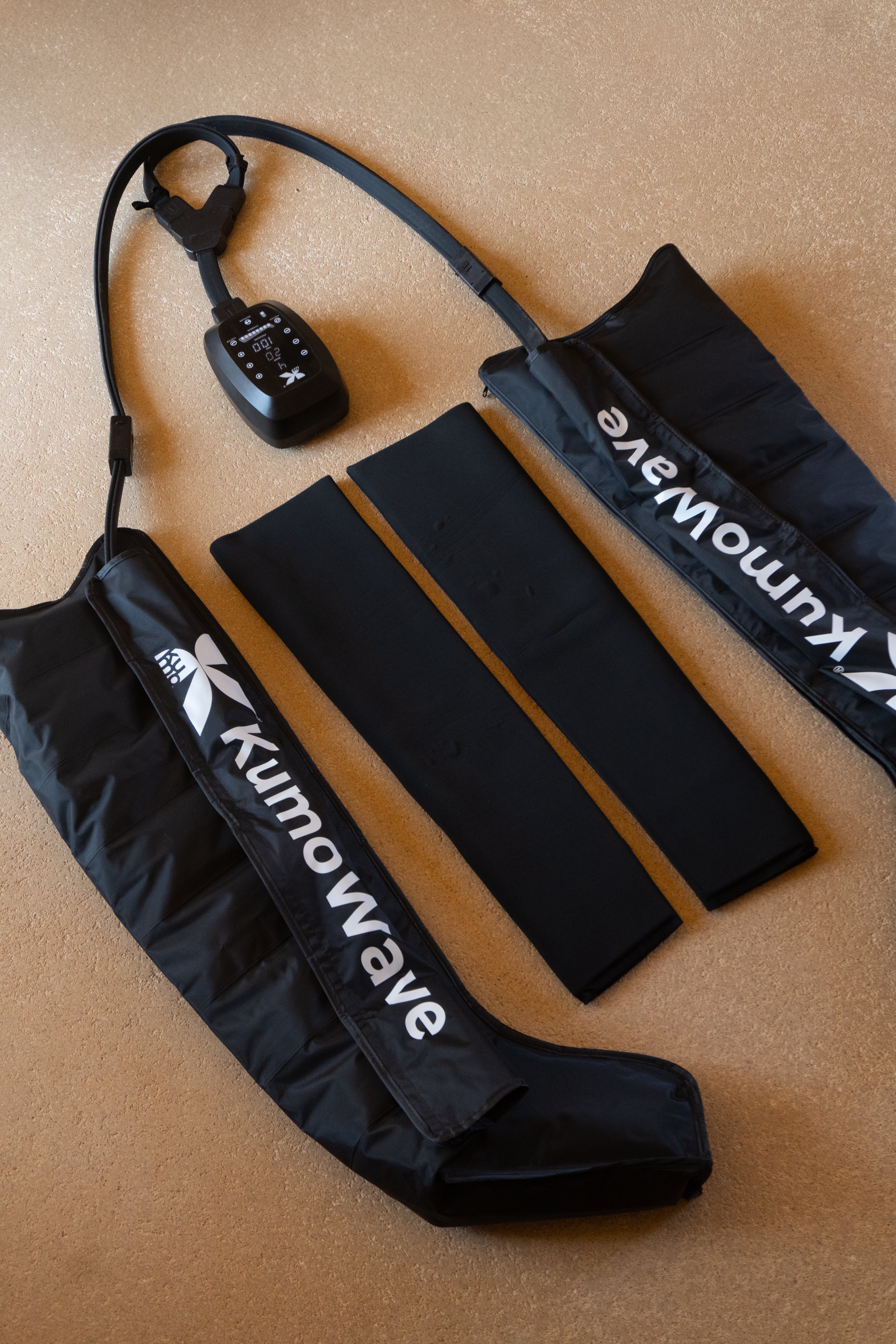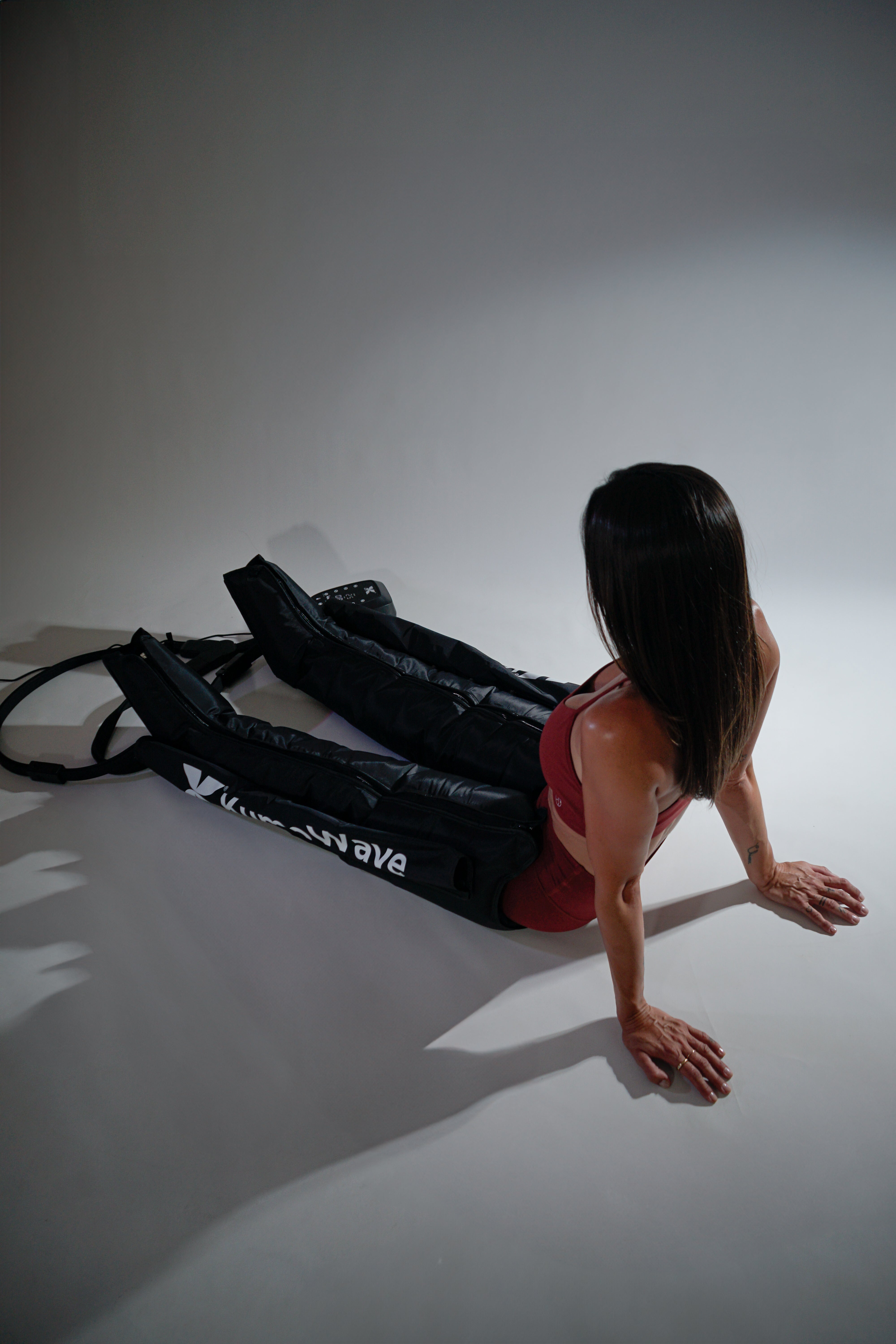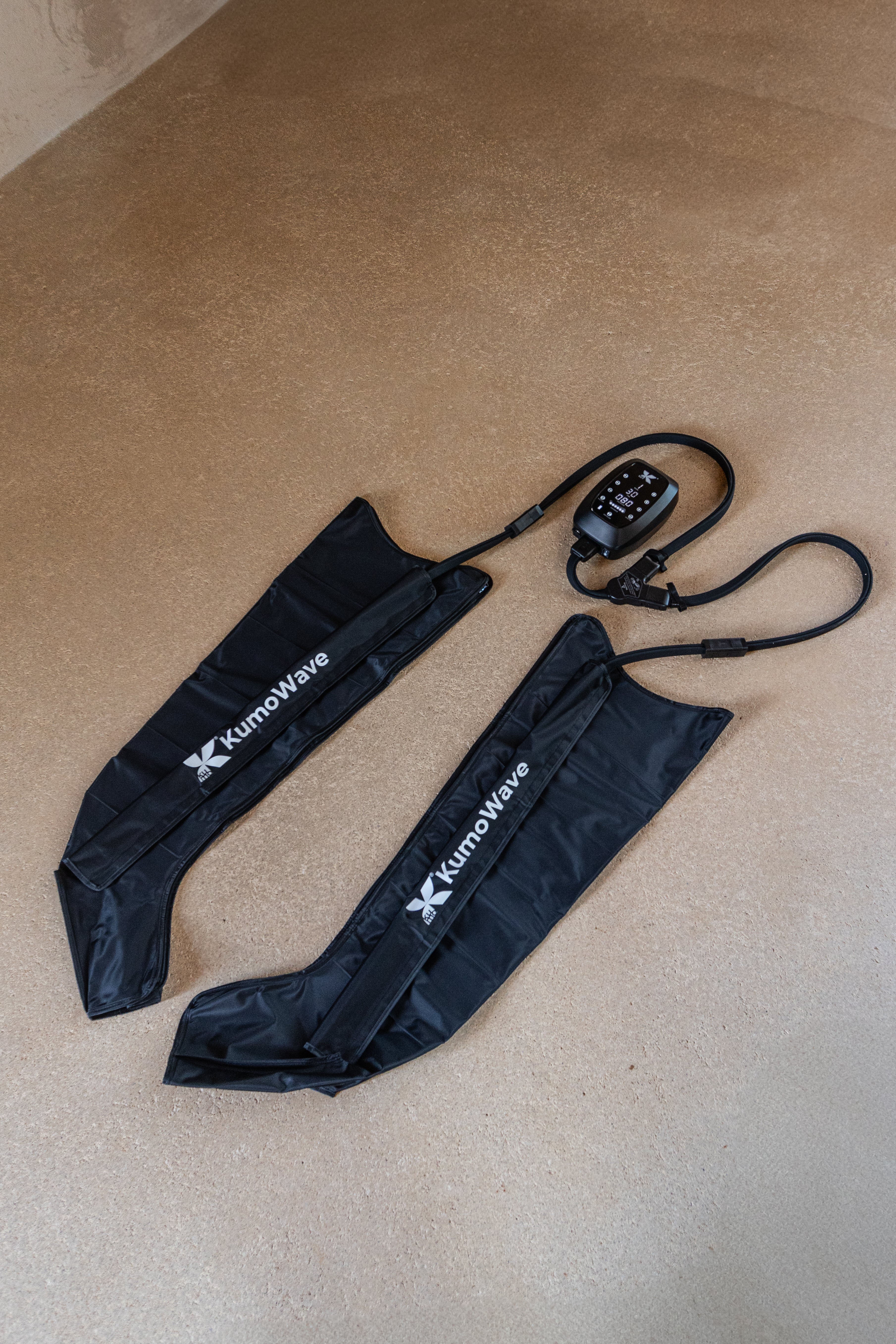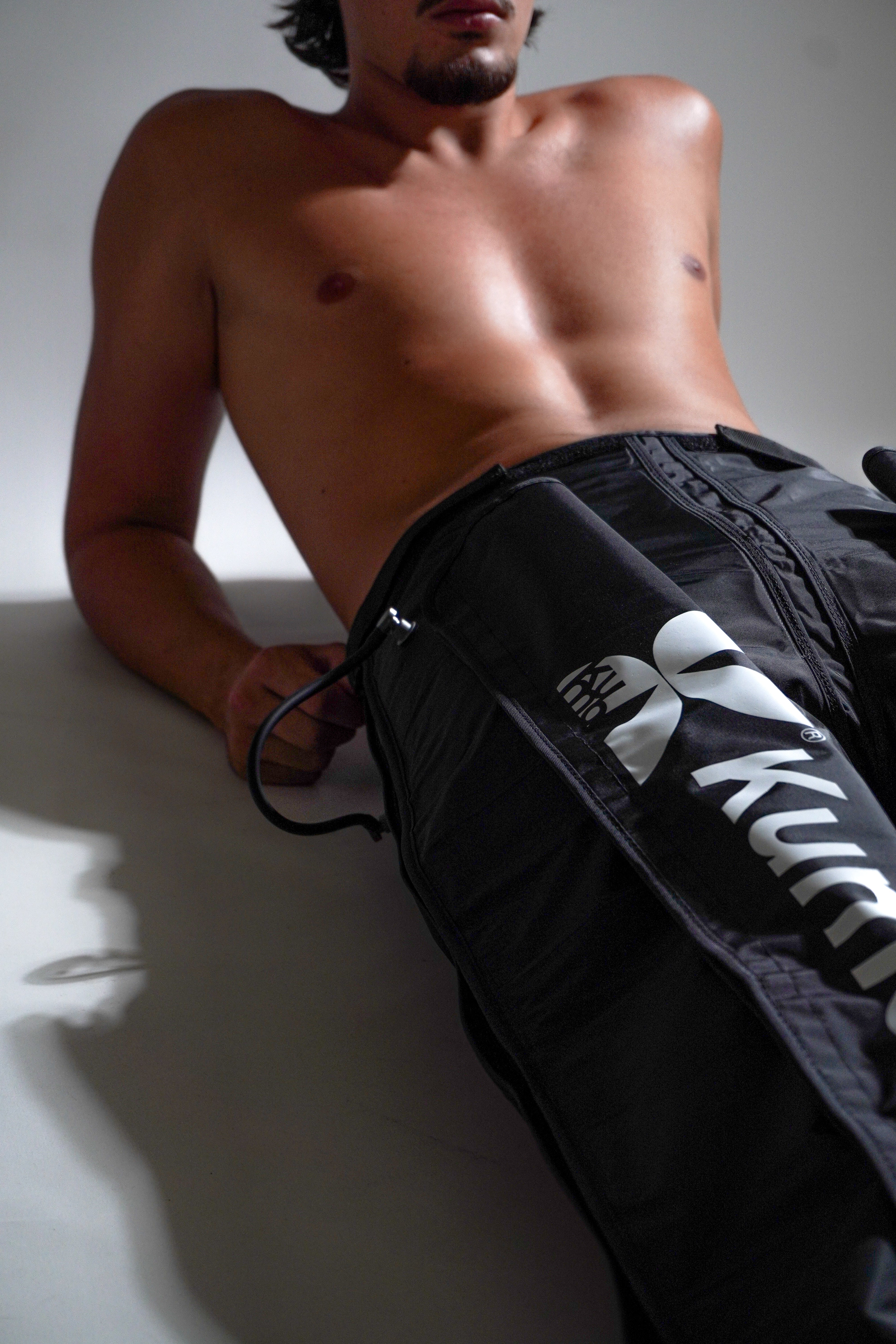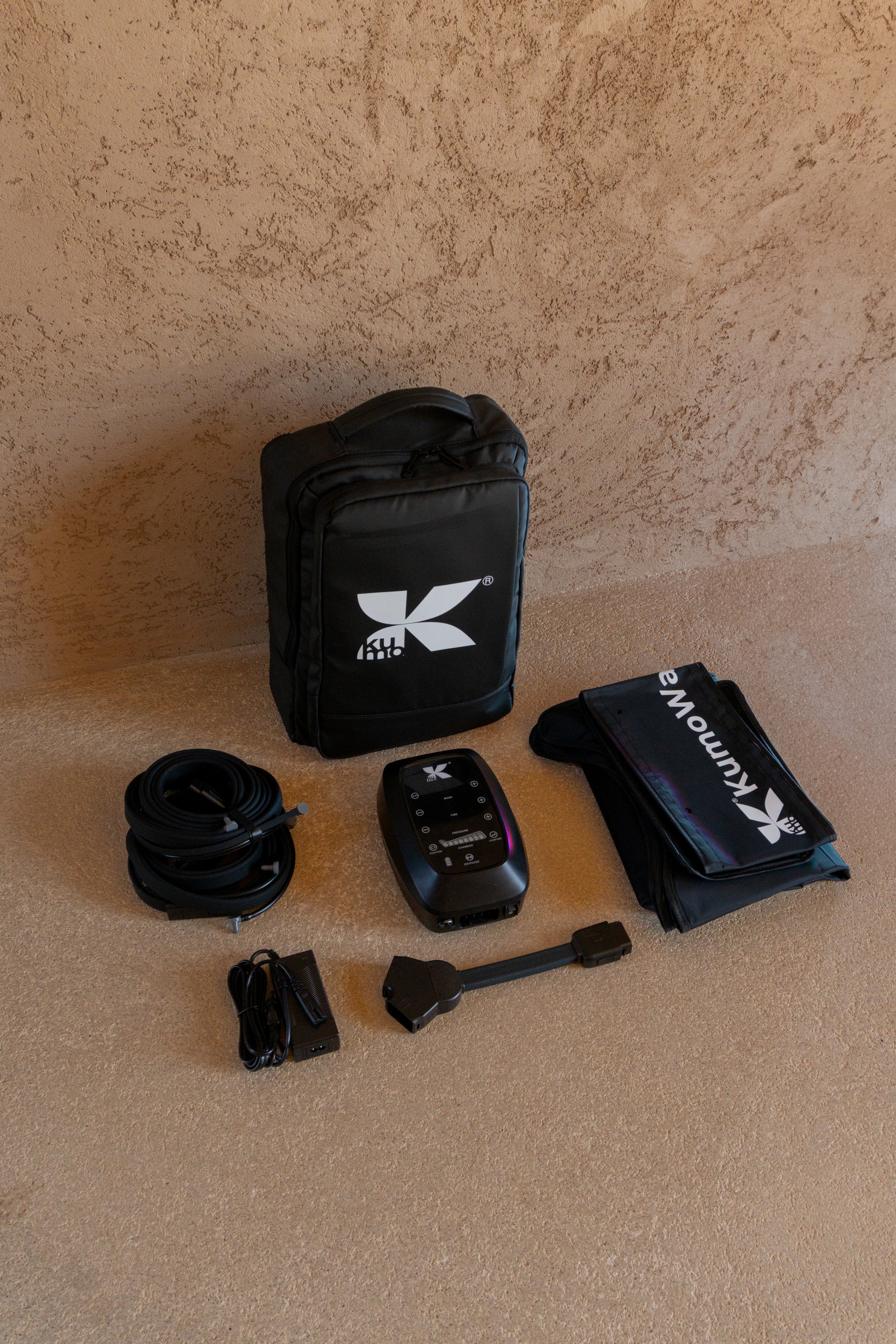Pressure therapy boots: what they are, how they work, and when to use them. If you're looking to relieve tired legs, improve circulation, or speed recovery, here's a clear and practical guide to getting the most out of them safely.
Coming soon
- Sequential pneumatic compression therapy that promotes venous and lymphatic return.
- Useful for leg fatigue, fluid retention, post-workout recovery and edema support.
- Typical sessions of 15–30 minutes, 3–5 days/week depending on goal and tolerance.
- Avoid if there is active thrombosis, skin infection, decompensated heart failure or high-risk pregnancy.
- Complement to healthy habits: hydration, mobility and post-exercise care.
| Aspect | Synthesis |
|---|---|
| What are they? | Sleeves with air chambers that inflate and deflate in sequence |
| How they act | Intermittent compression that pushes blood and lymph toward the trunk |
| Benefits | Less heaviness and swelling; support for muscle recovery and well-being |
| Typical duration | 15–30 min per session (guideline) |
| For whom | Athletes, people with sedentary or standing jobs, travelers, people with heavy legs |
| Precautions | Contraindicated in active venous thrombosis, skin infections, uncontrolled heart failure |
What are pressotherapy boots?
Pressotherapy boots are intermittent pneumatic compression (IPC) devices that cover feet and legs with air chambers. When inflated in sequence, they generate gentle, progressive pressure from distal (ankles) to proximal (thighs).
This mechanical massage promotes venous return and lymphatic drainage. As a result, it helps reduce the feeling of heaviness, stasis edema, and discomfort after prolonged exertion or intense training.
How they work: technology and key parameters
Graded sequential compression
The chambers are inflated by "waves" that push fluids toward the heart. This sequential compression is different from static pressure: it mimics the pumping of the calf muscles and helps the venous and lymphatic valves work efficiently.
Pressure, cycles and modes
- Pressure (measured in mmHg) is adjusted according to your goal and tolerance. Moderate values are usually sufficient for comfort and recovery at home.
- The cycles alternate inflation and deflation to avoid stasis and allow reperfusion.
- Common modes: peristaltic (continuous waves), focal (specific areas) and sports recovery (more dynamic).
Practical advice: Start with moderate pressure and short sessions, and gradually increase. If you experience pain, persistent tingling, or numbness, reduce the intensity or stop the session.
Duration and frequency
For home use, many routines work with 15–30 minutes per session, several days a week. For post-workout recovery, 20–25 minutes is usually sufficient; for heavy legs, shorter but more frequent sessions may be comfortable. These are guidelines: adjust according to your experience or the advice of your professional.
Benefits: What the Evidence Says and What to Expect
Circulation and edema
Intermittent pneumatic compression has been used for decades to promote venous return and reduce stasis swelling. Guidelines such as NICE (2018, updated) recommend IPC for the prevention of venous thrombosis in hospitalized patients, highlighting its hemodynamic effect on venous flow. NICE NG89 . Although the context is clinical, the mechanical principle that improves hemodynamics is the same.
The Cleveland Clinic describes these devices (SCDs) as safe and effective for maintaining blood flow in the lower extremities. If you have medically caused edema, consult your physician first.
Sports recovery and muscle comfort
In sports, CNI is used to relieve the sensation of heavy legs and to recover faster between sessions. Evidence generally shows improvements in subjective markers (pain, heaviness, feeling of recovery) and sometimes small benefits in range of motion, while the effects on acute performance vary across studies. As a post-exercise wellness tool, its safety and comfort profile make it a practical option to integrate into a recovery routine.
Lymphatic drainage: complementary use
The International Society of Lymphology consensus (2020) contemplates pneumatic compression as a complement to lymphedema management under clinical supervision, together with bandages, exercise and skin care (not as a substitute) ISL 2020 Consensus . For medical use, always follow professional advice.
Who are they suitable for?
- People with a feeling of tired legs due to sedentary work or prolonged standing.
- Athletes looking to alleviate post-session stress and optimize recovery between workouts.
- Frequent travelers who suffer from bloating after long flights.
- Those who want to improve the well-being of their legs as part of a self-care routine.
If you're looking to integrate this technology into your daily life, discover KUMO's proposal, which combines aesthetics, innovation, and ease of use in its recovery ecosystem: visit KUMO .
Safety, contraindications and side effects
CNI is generally safe when used correctly, but it's not for everyone. Avoid its use (or consult with a doctor beforehand) if you have:
- Deep vein thrombosis or suspected DVT.
- Active skin infections in the area (cellulitis).
- Decompensated heart failure or edema due to cardiac causes.
- Severe peripheral arterial disease, neuropathies with loss of sensation, open wounds.
- High-risk pregnancy or vascular complications during pregnancy.
NICE and Cochrane reviews support its safety in controlled settings for thrombosis prevention. Cochrane . Mild side effects may include temporary redness or compression marks; these should subside shortly after the session.
How to use them well: guidelines and recovery routine
Before and during the session
- Hydrate and, if you can, do 3–5 minutes of ankle and hip mobility.
- Wear boots over light clothing or socks for added comfort.
- Adjust pressure and time to moderate tolerance; look for a “firm hug” sensation, never pain.
- Keep your legs relaxed and your posture comfortable.
After: boost the effect
- Walk for 2–3 minutes or perform diaphragmatic breathing to maintain the return.
- It integrates other complementary KUMO tools: the LED light therapy (red and infrared light) promotes muscle recovery and sleep, and a KUMOPULSE Air massage gun helps release tension points.
How to choose a model
- Number of chambers and quality of sequential inflation.
- Adjustable pressure ranges and pre-configured programs.
- Ease of cleaning, transport and materials in contact with the skin.
- After-sales support and compatibility with your routine. Explore the range at KUMO pressotherapy .
If you have specific usage or health questions, please write to us: contact .
FAQ
How many sessions per week are recommended to notice benefits?
For general well-being and lighter legs, many people notice changes with 3–5 weekly sessions of 15–30 minutes. On intense training days, a post-workout session can accelerate the feeling of recovery. If this is your first time, start with 2–3 sessions and adjust based on how you feel. In cases of medical conditions (e.g., lymphedema), the regimen should be individualized under professional supervision. Remember: more is not always better; consistency and comfort are key.
Are they good for cellulite or just circulation?
Its main action is hemodynamic and lymphatic: it reduces fluid retention and heaviness. In some people, this improved drainage can temporarily visually refine orange-peel skin, but it is not a specific treatment for cellulite. For a comprehensive aesthetic approach, it combines habits (diet, strength, and rest) and complementary tools such as red and infrared light. LED light therapy .
Can they be used during pregnancy?
In uncomplicated pregnancies, some people use them to relieve mild swelling. However, pregnancy changes hemodynamics and increases the risk of thrombosis, so it's essential to consult your healthcare professional first. Avoid them if there are signs of DVT, gestational hypertension, preeclampsia, or other complications. If your doctor approves it, opt for moderate pressure, short sessions, and listen to your feelings.
Compression boots or daily compression stockings?
They perform related but distinct functions. Stockings offer low- to medium-grade static compression for continuous use throughout the day. Boots apply intermittent, more intense, sequential compression in specific sessions to enhance recovery. Many people combine both: stockings during the day and boots when they get home. If you have vascular disease, ask for a personalized recommendation.
Is there solid evidence of its safety?
Yes, its use is widely extended in clinical settings to maintain venous flow and prevent thrombosis in immobilized patients, as reported NICE and the Cleveland Clinic. At home, follow the contraindications, adjust the pressure to a comfortable level, and stop the session if you experience pain, numbness, or color changes. Always consult a professional if you have a medical condition.
To take into account
- Pressotherapy is a mechanical massage that promotes venous and lymphatic return in a safe and comfortable manner.
- It benefits the sensation of light legs, well-being and post-workout recovery.
- Adjust pressure and time to your tolerance; regularity > intensity.
- Please observe contraindications and consult if you have vascular conditions or are pregnant.
- Integrate movement, hydration, and sleep habits for consistent results.
- Ready to get started? Explore the collection at KUMO pressotherapy or learn more about our approach in KUMO .
